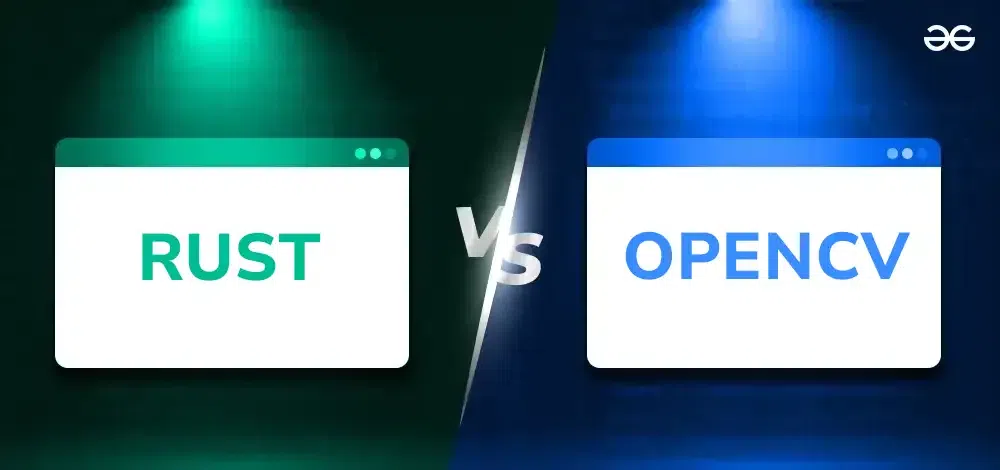|
Rust and OpenCV are both powerful tools in the world of software development, but they serve different purposes and excel in distinct areas.
 Rust Vs OpenCV This article will provide a comprehensive comparison of Rust and OpenCV, highlighting their strengths, use cases, and key features.
What is Rust?
Rust is a systems programming language that focuses on safety, speed, and concurrency. It was designed by Mozilla Research and has gained significant popularity due to its unique features and capabilities.
Key Features of Rust:
- Memory Safety: Rust ensures memory safety without using a garbage collector, preventing common bugs such as null pointer dereferencing and buffer overflows.
- Concurrency: Rust’s ownership system makes it easier to write concurrent programs, reducing data races and ensuring thread safety.
- Performance: Rust offers performance comparable to C and C++ due to its low-level control over system resources.
- Modern Syntax: Rust provides a modern syntax that is easy to read and write, making it more accessible for developers familiar with other high-level languages.
Use Cases for Rust:
- Systems Programming: Rust is ideal for developing operating systems, embedded systems, and other low-level applications that require direct hardware interaction.
- Web Development: With frameworks like Rocket and Actix, Rust is becoming increasingly popular for web development.
- Game Development: Rust’s performance and memory safety make it suitable for game development, with libraries like Amethyst and Bevy.
- Networking: Rust is used for building network services and applications, offering reliability and speed.
What is OpenCV?
OpenCV (Open Source Computer Vision Library) is a popular open-source library focused on computer vision and image processing. It provides a comprehensive set of tools and functions for image and video analysis.
Key Features of OpenCV:
- Extensive Library: OpenCV includes over 2,500 optimized algorithms for various computer vision tasks, such as object detection, face recognition, and image segmentation.
- Cross-Platform: OpenCV is available on multiple platforms, including Windows, macOS, Linux, Android, and iOS.
- Real-Time Processing: OpenCV is designed for real-time applications, making it suitable for tasks that require fast and efficient image processing.
- Integration with Other Libraries: OpenCV can be easily integrated with other libraries and frameworks, such as TensorFlow and PyTorch, for advanced machine learning applications.
Use Cases for OpenCV:
- Image and Video Processing: OpenCV is widely used for tasks such as image enhancement, filtering, and transformation.
- Object Detection and Recognition: OpenCV provides tools for detecting and recognizing objects in images and videos, including face and gesture recognition.
- Machine Learning: OpenCV includes modules for machine learning, allowing developers to train and deploy models for various computer vision tasks.
- Augmented Reality: OpenCV is used in augmented reality applications to track objects and overlay digital content on the real world.
When to use Rust Vs OpenCV?
When to Use Rust?
- System-Level Programming: For applications requiring direct hardware interaction or those where performance and safety are paramount.
- Concurrency: In scenarios where safe and efficient concurrent programming is crucial.
- Performance-Critical Applications: When maximum performance is needed, and the developer is willing to manage low-level details.
When to Use OpenCV?
- Quick Prototyping: Ideal for rapid development and testing of computer vision algorithms, especially with Python bindings.
- Wide Range of Vision Tasks: For projects needing a broad set of pre-built functions and tools for image and video processing.
- Cross-Platform Development: When the application needs to run on multiple operating systems without significant changes.
Rust Vs OpenCV -Key Differences
|
Feature/Aspect
|
Rust
|
OpenCV
|
|
Type
|
Systems programming language
|
Computer vision library
|
|
Primary Use Case
|
Systems programming, web development, game development, networking
|
Image and video processing, computer vision
|
|
Performance
|
High performance, comparable to C/C++
|
Optimized for real-time image processing
|
|
Memory Safety
|
Ensures memory safety without garbage collection
|
N/A
|
|
Concurrency
|
Built-in support for concurrency and parallelism
|
N/A
|
|
Syntax
|
Modern and expressive
|
N/A
|
|
Learning Curve
|
Moderate, with a steep learning curve for ownership concepts
|
Low to moderate
|
|
Community & Ecosystem
|
Growing, active community with a rich ecosystem
|
Large, mature community with extensive resources
|
|
Platforms
|
Cross-platform (Windows, macOS, Linux)
|
Cross-platform (Windows, macOS, Linux, Android, iOS)
|
|
Integration
|
Easily integrates with other Rust libraries and tools
|
Easily integrates with machine learning frameworks (TensorFlow, PyTorch)
|
|
Real-Time Processing
|
Suitable for real-time applications
|
Specifically designed for real-time image processing
|
|
Memory Management
|
Manual memory management with ownership system
|
Automatic memory management through the library
|
|
Libraries/Frameworks
|
Cargo (package manager), Rocket, Actix, Amethyst, Bevy
|
TensorFlow, PyTorch, Dlib
|
Conclusion
In summary, Rust and OpenCV are both powerful tools, but they cater to different needs. Rust is a systems programming language that excels in performance, memory safety, and concurrency, making it suitable for a wide range of applications. OpenCV, on the other hand, is a specialized library for computer vision and image processing, offering a comprehensive set of tools for real-time image analysis.When choosing between Rust and OpenCV, consider the specific requirements of your project. If you need a high-performance, safe, and concurrent language for systems-level programming or web development, Rust is an excellent choice. If your project involves image processing or computer vision tasks, OpenCV provides the necessary tools and functions to achieve your goals efficiently.
|

